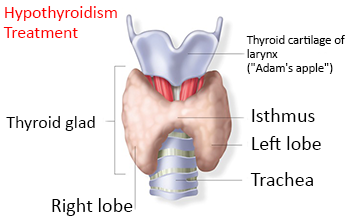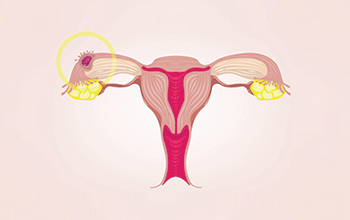Hypothyroidism is a condition in which the thyroid gland produces an abnormally low amount of thyroid hormone.
Hypothyroidism symptoms usually develop incredibly slowly; it can take years for them to show up. Also, some symptoms mimic symptoms of other diseases, such as fibromyalgia and rheumatoid arthritis.
Hypothyroidism symptoms include constipation, depression, and fatigue. Pale, dry skin; sensitivity to cold; joint pain; elevated cholesterol levels, irregular periods; brittle fingernails and hair; and unexplained weight gain are other common symptoms.
Thyroid can be detected by thyroid test. If these tests show an elevated thyroid-stimulating hormone (TSH) and low levels of thyroid hormones, like free T4, total T3, or free T3, it may be an indication that you have hypothyroidism. Typically, if you have a low level of T4 along with a high level of TSH, you have hypothyroidism.
Hypothyroidism can be easily treated with thyroid hormone replacement. At Motherhood Bangalore and Chennai, with a team of thyroid experts and specialists, we provide the best endocrinology treatment with world class state of the art facilities.
With the best Hypothyroidism treatment at Motherhood at the right time, you can lead a healthy and happy life. Consult our experts today for the Hypothyroidism treatment.
ByDr. Archana Pathak
Uterine Fibroid Treatment Types & Symptoms
Uterine Fibroid Treatment in Bangalore & Chennai
Uterine fibroids are a type of tumor. However, they are composed of smooth muscle fiber like the uterine wall. They are much denser than the normal uterine wall muscle fiber. In a normal situation, these fibroids do not cause any pain unless they are exceptionally large to create pressure in the bladder or any other organs. Types of uterine fibroids:- Subserosal Fibroid
- Submucosal Fibroid
- Intramural Fibroid
- Pedunculated Fibroid
- Heavy menstrual bleeding.
- Menstrual periods lasting more than a week.
- Pelvic pressure or pain.
- Frequent urination.
- Difficulty emptying the bladder.
- Constipation.
- A backache or a leg pain.
- Myomectomy (Removal of fibroid)
- Hysterectomy (Removal of Uterus and fibroid)
- Salpingo-oophorectomy (Hysterectomy with removal of Fallopian tubes and ovaries)
Motherhood Hospital is a designated Center of Excellence in Minimally Invasive Gynecological surgery. We??re led by the highly accomplished clinicians, supportive nursing care ably supported by the latest technologies and treatment protocols.With state-of-the-art NICU??s, Labor Suites, Adult ICU??s, Operative Rooms, Laboratory Services and 24/7 pharmacy, Motherhood delivers the best in women, new born and children??s healthcare. Book your appointment today with our experts or send us an enquiry.
By Dr. Sireesha Reddy from HebbalChanges in human body during pregnancy
Human body undergoes enormous changes during pregnancy. It affects the body from head to toes. It is amazing how the body accommodates the baby so smoothly.
1) There is a new growth spurt in hair, glow on the face and bleeding gums because of increased estrogen in the blood.
2) Increased pigmentation on face ,neck , nipples and abdomen due to increase in melanin . This pigmentation is also known as melasma or chloasma or PREGNANCY MASK.
3) Water retention leading to puffiness of face , swelling of fingers and toes . Swelling around sciatic nerve causes pain in lower back and thigh . Contact lens users feel difficulty in their usage.
4) There is marked increase in the size of breasts as they need to get ready for nursing the baby.
5) Dryness of skin and breakage of collagen leading to stretch marks.
6) Constipation because of progesterone ,the hormone of pregnancy ,it is known to make the bowel sluggish.
7) Joints and ligaments loosen around pelvis and other places because of pregnancy hormones specially RELAXIN, this helps for accommodating baby and delivery. Loosening also results in back pain, change in gait WADDLING.
8) Increase in body temperature, heart rate and breathlessness due to increase in metabolic rate and increased cardiac output.
9) Increase in stagnation of venous blood flow leads to hemorrhoids or piles, varicose veins.
10) Acne worsens as the hormonal shift makes skin very oily.
By,
Hernia in Pregnancy By Dr. Sangeeta Gomes
Hernia is a hole or gap in the abdominal muscle wall that causes either intestine or fatty tissue to protrude through.
Areas of Hernia: Abdomen, Groin, Incisional sites.
Hernia types:
- Umbilical or belly button: Umbilical Hernia is the most common of Hernias in pregnancy. It is the site where umbilical cord is attached when child is born. There is a small opening in this area and an increased pressure can stretch it open. It appears in pregnancy and disappears after delivery.
- Inguinal hernia/Femoral hernia: These are seen in the groin area.
- Incisional hernia: It develops in the operation site, and is usually seen in vertical scar on abdomen.
Hernia normally occurs after 18-20 weeks of pregnancy and around 2% of women get Hernia during or after their pregnancy. Approximately 0.02% of women require surgery.
2 per 1000 women with transverse incision and 10 to 30% women with vertical incision can get hernia.
Hernia in pregnancy does not require immediate attention, unless it becomes painful. If painful and left untreated can lead to serious and life-threatening complications like obstruction and intestinal gangrene.
Babies may not get affected by mothers Hernia.10-30% of infants have umbilical hernia after birth which usually closes by 1 year and 2% remain which may require surgery.
Predisposing factors:
- Women having muscle weakness from birth.
- Aggregating factors like chronic cough, constipation, asthma and obesity
- Big baby, twins, polyhydramnios can also stretch muscle making them thin and weak, and tear them due to pressure of growing baby in uterus.
- Heavy weight lifting.
- Fluid in the abdomen.
- Tumor in the abdomen raising intra-abdominal pressure.
Signs and symptoms of Hernia:
Many women have no symptoms. Some can see or feel a bulge while lying down, standing or coughing, in the inguinal or belly button area. Some have dull aching pain while laughing talking, coughing and sneezing. Some may find difficult to walk if they become bigger. If symptoms like pain, fever, nausea are there, they should meet the doctor immediately.
Diagnostic tests:
- By physical examination on inspection and palpation feeling the gap in the hernia site and reducing the contents back into the abdomen.
- By cough impulse one can feel the touch of the intestine gurgling in the hernia site.
- Ultrasound examination of abdomen and pelvis can show the site, size, shape and contents of the gap. Higher test like CT scan also be done.
Treatment of hernia:
Once detected treat with good physical support at the site of a hernia to prevent the further discomfort. Hernia support band, compression therapy groin bands etc to be used under Doctor??s supervision. While sleeping take off the hernia support band. Keep pillow between or under knees for support.
It??s not recommended to have surgery during pregnancy unless its posing risk to the mother and baby. If due to some complication, surgery has to be done, plan it in second trimester of pregnancy. This carries a risk of preterm delivery.
For Pregnancy with Hernia, Caesarian section is not mandatory, they can deliver normally. Caesarian section is done only if obstetrics reasons are there. After delivery allow the body to recover fully which can be from 3 to 6 months. Then surgery can be done, if Hernia persists.
Tips for Prevention:
- Go for pre-conception counseling which includes general and physical examination to rule out Hernia.
- Minimize excess physical activity like lifting heavy weight.
- Yoga and muscle strengthening exercises under guidance
- Maintain healthy body weight
- Maintain balance diet, avoid constipation.
- Avoid lifting or carrying children in arm.
- Avoid smoking, and avoid pushing hard during bowel movement or passing urine.
Types of surgery:
- Open method
- Laparoscopic method
In both the methods hernia gap is repaired using a mesh.
Multiple Pregnancy
Multiple pregnancy is when there are more than one embryo getting attached to uterine lining and developing into multiple foetuses. This can be twins, triplets, quadruplets or higher order pregnancies. The incidence of twins is gone up from 18.9/1000 live births in 1980 to 32.1/1000 live births.
How multiple pregnancy happens?
One baby growing in the womb (uterus) on its own is called a singleton pregnancy. By far the most common type of multiple pregnancy is a twin pregnancy when there are two babies. Having three babies in the same pregnancy is known as triplets and having four is known as quadruplets. It is very rare to have more than four. Multiple pregnancy happens because two to three eggs get fertilized with two to three sperms or when one fertilised egg make two to three instead of one embryo.
Let us understand about TWINS as this is the commonest of all multiple pregnancies. Also, it is important to understand that the placenta is crucial to the pregnancy – it is the place where your body ‘meets’ your baby directly to pass across the nutrients your baby needs to grow. When an egg is fertilized it starts dividing till it convert itself into a zygote. If split occurs in early stage of cell division identical twins are formed. This cell division continues until it converts into a ball of cells and starts implanting itself in the lining of womb and becomes an embryo. The cells will form distinct areas like central group forms the baby and outer lining form the amniotic sac.
Types of twins:
- Dichorionic diamniotic (DCDA): Two placenta and two amniotic sacs.
- Mono chorionic diamniotic (MCDA): One placenta and two sacs.
- Mono chorionic mono amniotic (MCMA): One placenta and one sac
Causes of multiple pregnancy:
- Maternal age: women more than 35 are more prone to conceive multiple.
- Fertility medication: These drugs stimulate ovaries to produce multiple eggs
- Family history: History of multiple gestation in the family makes one prone for the same.
- Had a history of twin in the past.
Risks to foetuses
- premature birth
- low birth weight
- Twin to twin transfusion
- Discordant growth
- Miscarriages
RISKS TO MOTHER
- Gestational diabetes
- Preeclampsia or hypertension
- Severe hyperemesis
Management
- Foetal reduction: this is termination of one or more foetuses after the NT USG . Proper understanding of the procedure from parental side is very important. Risk of abortion needs special attention.
- More frequent visits to obstetrician
- Cervical encircalage / stitch: It’s role in preventing miscarriage is doubtful
- Vaginal progesterone: this is known to help keep cervical integrity
- Dietician advice to help prevent GDM
- Ecosprin can be advised for prevention of preeclampsia
- More frequent scans to understand the growth pattern.
- Intervention by foetal Medicine expert if required
- Vigilant postnatal care as the chances of post-natal depression is high
- Avoid alcohol, smoking as advised with any singleton pregnancy.
- Steroid injection: these injections are given to mother to help the maturity of foetal lungs, by doing this we can avoid/ decrease the stay of babies in NICU
Mode and time of delivery
Chances of Normal Vaginal Delivery is high under following conditions:
- The babies are growing properly
- Position of babies in the womb normal and conducive for normal delivery
LSCS would be a method of choice for:
- MCMA twins
- Pprom: water break/ leaking prematurely before term
- Unfavourable position
- CPD wherein the birth passage is narrow
- Second twin after vaginal birth of first baby, if vaginal delivery not possible due to abnormal lie and position of baby, decreasing heart rate, placental abruption
As per guidelines the ideal time of delivery is around 38 weeks, any time before is 32 weeks has high risks for babies
Special attention
Genetic screening: Please talk to your obstetrician and opt for amniocentesis if indicated, double/quadruple marker, CVS and NIPT screening methods are not conclusive
Bed rest: not indicated
Eat for three: not required, should get consultation with dietician
Breastfeeding: no issues and both the babies can be fed properly
ENJOY YOUR PREGNANCY AND FEEL FREE TO ASK FOR HELP FROM FAMILY AND FRIENDS DURING PREGNANCY AND POST YOUR DELIVERY AS MULTIPLE PREGNANCY IS A VERY DEMANDING CONDITION PHYSICALLY AND MENTALLY.
ECTOPIC PREGNANCY
An ectopic pregnancy is an early pregnancy that occurs outside of the normal location (uterine lining) for a developing pregnancy. The vast majority of ectopic pregnancies are so-called tubal pregnancies and occur in the Fallopian tube. An ectopic pregnancy occurs in about one in 1%-2% of all pregnancies.
These other places can be:
1) Fallopian tubes
2) Ovaries
3) Cervix
4) Cornua of uterus
5) Abdominal Cavity
The major health risk of ectopic pregnancy is rupture leading to internal bleeding. Before the 19th century, the mortality rate (death rate) from ectopic pregnancies exceeded 50%. Statistics suggest that with current advances in early detection, the mortality rate has improved to less than five in 10,000. The survival rate from ectopic pregnancies is improving even though the incidence of ectopic pregnancies is also increasing. The major reason for a poor outcome is failure to seek early medical attention. Ectopic pregnancy remains the leading cause of pregnancy-related death in the first trimester of pregnancy.
Causes of Ectopic pregnancy:
1)LAZY EMBRYO
The embryo does not travel till the cavity of uterus, but gets attached in the ovary, tube or cornua of uterus .
2) PELVIC INFLAMMATORY DISEASE (PID) : infection because of :
1) chlamydia,
2) bacteria
3) acute appendicitis
4) recurrent D & C/ MTP
5) pelvic surgery
inflammation of the pelvis sets in and the fallopian tubes get damaged, form adhesions, get partially /completely blocked and impede the movement of embryo. This makes embryo to get settled in the tube.
3) ENDOMETRIOSIS
Here the anatomy of Fallopian Tubes and Pelvis gets distorted and tubes do not function to the full potential.
4) TUBAL LIGATION OR REVERSAL OF THE SAME
Family planning procedure where the tubes are tied sometimes fails and this can lead to partial blockage of tubes.
5) IUCD
It is sometimes the cause of genital tract infection and can lead to damaged tubes.
6) PREVIOUS ECTOPIC PREGNANCY
7) EMERGENCY CONTRACEPTIVE PILL
Here the egg is already fertilised and it’s movement is hampered because of change in the hormonal miluea
8) PROGESTERONE ONLY PILL (MINI PILL)
Here the mucus membrane of tubes gets altered and the motility of tube also is affected
9)CIGARETTE SMOKING
It is known to increase the level of protein PROKR1 in the fallopian tube and this protein is known to help in implantation of embryo.
Please remember: ectopic pregnancy is not your fault and it just happens, one needs to be vigilant and aware.
Tips for Breastfeeding Newborn: Motherhood Hospital by Dr. Sonali Santhanam
Breastfeeding is instinctive for both mother and baby. A newborn when left undisturbed on a mother??s belly is able to crawl up to the breast, find the nipple and self-attach. However, despite being instinctive and natural, breastfeeding is not always easy.
New mothers have ample support at the hospital but they can feel overwhelmed with the new baby at home especially in the first few weeks. If breastfeeding is going well, it is easier for moms to start enjoying their newborn while they recover. However, breastfeeding can be challenging in the early days. Some roadblocks with breastfeeding include nipple soreness, painful latch, low milk supply or oversupply, poor weight gain in babies and lack of sleep.
Understanding newborn behavior and adjusting your expectations in the first few weeks can ease your transition to parenthood. Here are some pointers to get breastfeeding off to a pain-free and stress-free start.
1. Attend a breastfeeding class before your baby arrives. Understanding frequency and duration of breastfeeding, newborn sleep and wake cycles, and recognizing hunger cues will help you get into a rhythm sooner. Being able to practice nursing positions and latching techniques on model babies in class should help you gain confidence and troubleshoot with ease in the early days.
2. Feed within the first hour of birth. Babies are generally alert and demonstrate instinctive feeding behaviors in the first hour of birth. When a baby is allowed to crawl up to the breast and self-attach the latch is deeper and transfer of Colostrum is better. Studies have shown that early initiation of breastfeeding and skin-skin contact with baby improves outcomes by bringing milk in sooner, stimulating baby??s feeding instincts and is associated with increased likelihood of exclusive breastfeeding for first 4 months[1, 2].
3. Stay close to baby: Babies like to be held and you cannot spoil a newborn with too many cuddles. Dr. Nils Bergman, one of the founders of Kangaroo Mother Care, describes the mother??s breast as the newborn’s natural habitat. As with any mammal, separation from its natural habitat triggers a protest-despair response. The protest in the newborn involves crying to be reunited with mother and the despair response is the withdrawal, fluctuation in heart rate and a rise in body temperature that follows. Rooming in with the baby and holding baby skin-to-skin contact will help baby feel secure where she can hear your heartbeat and stay warm. This also means your baby will cry less and will be easier to handle.
4. Nurse with a SOFT touch
Bonding with a SOFT touch helps release oxytocin and facilitates milk production. Oxytocin is called the ??love hormone?? as it is responsible for the falling in love experience the mother and baby have as they bond.
SOFT touch is:
Skin-to-Skin Contact
Open Eye Contact
Fingertips Touching
Time Together
Oxytocin levels can drop with bright lights and if mom is conscious and surrounded by too many people. Uninterrupted quiet time with your baby is a must. Ask visitors to delay their first visit until you have established a rhythm with your baby.
5. Pay attention to hunger cues. Your baby may pucker and smack her lips turn her face from side to side, bring her hands to her mouth and even dive into your breast in search of the nipple. It is important to feed your baby at these first signs of hunger. Crying is a late sign and it is generally harder to get a crying baby to latch.
6. Feed on Demand in the first 3 months. Feed your baby at the first sign of hunger and as often as they want to. In the first 2 weeks, however, babies are very sleepy and may need to be woken up to feed every 2.5 hours. Frequent feeding in the first 2 weeks will help your milk come in sooner, regulate the milk production, and help baby maintain blood sugar levels steady. Once your baby has regained its birth weight (babies loose weight in the first week until the milk comes in) you can relax on this rule and start feeding on cue. Allow you baby to empty one side completely till breast feels soft to ensure baby get the rich fatty hind milk then burp and offer the other side.
Sleep training and schedule feeding if initiated sooner than 4 months of age can compromise milk supply. Breastfeeding is a demand and supply process and in the early days baby??s have frequent growth spurts. During a growth spurt, the baby??s appetite increases and it can be challenging to keep up with this increased need. You may feel discouraged and be tempted to supplement with formula, but you can be assured that your milk supply will catch up if you demand feed. A lactation consultant can help you quantify milk supply objectively if you suspect pathologically low milk production, which can happen in case of hormonal imbalances.
7. Get comfortable; Babies feed often in the first few months and poor positioning could cause your back and shoulders to hurt. Nurse baby-sitting in a comfortable chair using a feeding pillow that reaches up to the breast. Place your feet up on a low stool to bring baby closer. When the baby is latched on your shoulders should be comfortably relaxed and lower back supported.
Alternatively, you can use a laid back position to breastfeed in the early days where you are reclined to about 45 degrees and the baby is supported on your chest. This position also helps prevent traction on the nipple by the weight of the baby hanging under the breast. If you are unable to find a comfortable nursing position seek out a lactation specialist to help you as soon as possible.
8. Babies Breastfeed not Nipple fed. The latch is everything when it comes to breastfeeding. If your baby gets a large mouthful of the breast the nipples reach a comfortable spot in the babies mouth, so milk transfer is better and there is no pain. Conversely, if your baby is latched only on to the nipple it can get pinched between the baby??s tongue and the hard roof of the mouth leading to painful cracked nipples and poor milk transfer. Breastfeeding should not hurt and if pain persists throughout the feed consult a lactation specialist. Sometimes a consult might reveal a structural issue such as a high palate, tight frenulum or inverted nipples that require special intervention.
Signs that baby is latched well include:
1. Lips are flanged out
2. More of the areola is visible on the top and less below
3. Chin is in contact with the breast
4. Nose is free
5. No clicking sounds or dimpling of cheeks
Usually, a well-attached baby suckles a few times and then pauses to swallow. If your baby falls asleep at the breast a few breast compressions can get the milk flowing and keeps baby interested through the feed. This is preferred to the usual advice of tickling the baby??s ears and toes.
9. Stay away from bottles and pacifiers. If you need to supplement baby in the early days with formula or expressed milk it is best to use a syringe or a feeding cup. Introducing a bottle in the first 12 weeks can cause the baby to develop a preference for the faster flow the bottle offers. This might result in a nursing strike where the baby refuses to latch on directly. Coaxing the baby back to the breast will take patience and perseverance.
10. Enlist dad. Dads can feel left out during this phase that revolves around the mother-baby dyad. Dad??s positive and supportive attitude towards breastfeeding can really boost mother??s confidence and encourage her to keep going on difficult days. Dads can take turns with nappy changes, help with burping and swaddling, also do skin-to-skin contact and help moms relax. Dads can ensure moms get adequate rest, eat well at regular intervals and keep stress levels low.
Breastfeeding isn??t meant to be difficult or painful but it is definitely no mean feat! It is, however, an extremely rewarding experience when all goes well.
By Dr. Sonali Santhanam
Source:
1. Imdad, A., M.Y. Yakoob, and Z.A. Bhutto, Effect of breastfeeding promotion interventions on breastfeeding rates, with the special focus on developing countries. BMC Public Health, 2011. 11 Suppl 3: p. S24.
2. Sharma, A., Efficacy of early skin-to-skin contact on the rate of exclusive breastfeeding in term neonates: a randomized controlled trial. Afr Health Sci, 2016. 16(3): p. 790-797.
7 Strategies to Help a Couple Support Each Other When Struggling With Infertility
7 Strategies to Help a Couple Support Each Other When Struggling With Infertility
Dealing with infertility can be one of the most difficult challenges a couple can face in their relationship. The emotional impact of infertility can take its toll on each partner, diminishing their self-esteem and making them feel like they have no control over their life. For women, especially, medication and procedures can make them feel like their body isn??t their own anymore. To add to this, couples also have to deal with the financial burden of infertility as well as work-related stress. But instead of crumbling under the pressure of understanding infertility and its implications, couples can use this as an opportunity to strengthen their bond. Here are a few ways for partners to support each other while they embark on their journey to conception.
1.Understand how each of you is coping
Most men and women cope with the stress of infertility in a completely different way. Women prefer to voice their anxieties and speak at length about their emotions with their partner, family and a close circle of friends. In a lot of cases, men are the polar opposite. When men feel upset or anxious about infertility, they tend to internalise their emotions and try to work through it by themselves. This can make their partner feel like they??re aloof and disinterested. Understanding how each of you is dealing with infertility can go a long way in avoiding miscommunications and resentment. Try to have an open, honest conversation with each other so you can understand the other better instead of reaching conclusions on your own.
2.Openly discuss your feelings-but choose your words carefully
It??s completely normal for couples to experience feelings of inadequacy and guilt when coping with infertility. However, a lot of times, these emotions can be expressed instead as anger and resentment. When there is a lack of communication about infertility, marriage problems can often arise. This is why you should try to talk about your feelings honestly with your partner. But even while you have an open conversation, it??s important that you carefully think about your words and the impact that they might have. Using phrases like ??you never? and ??you always?? can make your partner feel attacked and distract from the matter at hand.
3.Go to all your doctor’s appointments together
Dealing with infertility as well as the emotional and physical stress which come with it can often be a very isolating experience. Societal conditioning can make women feel like infertility is their fault and that their body has betrayed them. Infertility can also make men believe that they aren??t as virile or ??manly??. But throughout this emotional turmoil, it??s important for a couple to remember that they are in this together. Being able to lean on each other can be the best way to face infertility head-on. One of the most effective ways to do this is by going to every doctor??s appointment together. Even if both partners aren??t required for the procedure, simply being there will help the other person feel like they have unconditional support.
4.Share the burden of daily chores equally
When they??re already dealing with stress due to infertility, additional burdens can often be too much for a couple to bear. Much too often, women do the bulk of the housework as well as daily chores like grocery shopping and picking up the dry cleaning. During fertility treatments, they also often go through the most number of procedures and medication. Both of these can affect a woman??s mental and physical strength. In these situations, it??s important that men realise what their partner is going through and try to lighten their load as much as possible. This means cleaning the house, cooking meals and simply being there for their partner when she needs it.
5.Express your admiration for each other
Self-esteem can often take a massive hit when a couple goes through the struggle of infertility. Both partners tend to feel inadequate and are riddled with feelings of guilt and insecurity. For women, infertility procedures and medication can worsen things because they can make her feel like her body is being violated. The side-effects of these procedures and the pain can also make a woman feel unattractive and less womanly. At times like these, both partners need to constantly reaffirm their love for each other and express their admiration for the person that they are. Just by frequently complimenting your partner, you can help your partner rebuild their sense of self-worth.
6.Find stress-busting activities to do together
Finding productive outlets for stress can help prevent it from building up and turning into anger. Stress is almost always the reason why couples become impatient with each other and constantly bicker when they??re dealing with infertility. Instead of allowing stress to consume their relationship, couples can use this as an opportunity to come closer. Stress-relieving activities like yoga, meditation and even working out together can kill stress and give couples a fun way to bond with each other.< 7.Make an effort to increase intimacy
Even though sex is the most important aspect of conception, ironically, it??s often the first thing to take a hit when a couple is confronted with infertility. Because of what it represents, sex can often remind couples of their failure to conceive. Sex can also become difficult when you??re trying hard to get pregnant because almost every aspect of it becomes monitored. Both partners can feel like there is no emotional connection anymore and often lose their sex drive. Men can also experience erectile dysfunction if they feel too pressured to perform. This is why it??s important that couples take time out to increase feelings of intimacy through romantic gestures. They should also try to have sex during non-ovulation days, so they don??t feel burdened by the pressure to conceive.
At Motherhood IVF, we understand that infertility can be demanding, emotionally stressful and physically draining for every couple. This is why our comprehensive infertility treatments include counselling to make the journey to conception easier for you. Visit Motherhood IVF today and take the first step towards your dream of becoming a parent.
9 Strategies to Help You Cope With Stress Due to Infertility
Dealing with the struggle of infertility is often one of the most physically and emotionally exhausting ordeals of a person??s life. The feeling of losing control over your body and your future can be extremely stressful. This is also very harmful because stress is one of the biggest risk factors to avoid when you??re trying to get pregnant. To break the vicious cycle of stress and infertility, here are a few coping strategies every couple should know about.
1.Vocalise Your Feelings
Many people dealing with infertility try to suppress their emotions and carry on like nothing is wrong. However, the more you try to push down your thoughts, the more they will threaten to resurface. Instead of staying in denial, speak about your emotions openly so you can start confronting them head-on. Vocalising your feelings will help you understand what you??re going through and might even help you tackle irrational thoughts. Getting these feelings of negativity out of your system is crucial to managing your stress levels.
2.Be Honest With Your Partner
The fear of not being able to have a child of their own can put unimaginable stress on a couple??s relationship. Feelings of inadequacy, guilt, anger and resentment are not uncommon when dealing with infertility. You and your partner might also deal with your grief in different ways, further widening the rift between you two. But, however difficult the journey to conception might be, it??s important that you and your partner remember that you??re in this together. Encouraging an open conversation with your partner and learning to support each other can make this entire ordeal a lot easier to bear.
3.Ask Questions to Clear Up Your Doubts
Nothing can worsen your stress more than misinformation and uncertainties. To make sure you get accurate information, it??s important that you don??t hesitate to ask your doctor questions. Keep a notebook to write down any doubts you have as soon as they cross your mind. Being fully informed about your condition and treatment options available helps you prepare yourself emotionally.
4.Don’t Feel Guilty About Your Emotions
Have you ever felt resentful about a friend??s pregnancy announcement only to feel ashamed of your reaction? Feeling guilty about your emotions can compound your stress to a huge extent. Instead, be honest with yourself about how you are feeling and accept your inner thoughts. It is completely normal to experience resentment, anger and jealousy while dealing with infertility, so don??t try to ignore these emotions. Don??t hesitate to remove yourself from situations that can trigger negative thoughts if it helps you maintain your emotional balance. Many women even find it helpful to go off social media to avoid seeing pictures of their friend??s babies.
5.Write Down Your Thoughts
A journal can be the perfect way to vent your feelings in private, without fear of hurting anyone or being judged. Your journal can also help you keep track of important dates, medication and nutritional guidelines, so you don??t feel overwhelmed. Whenever you feel the stress creeping in, pen down your thoughts in your private journal to get them off your mind. Many therapists recommend writing a little every day, so you don??t repress any negative emotions.
6.Build a Strong Support System
Dealing with infertility is not a journey anyone can undertake on their own. Infertility treatments take a toll on your body and your emotional well-being. Having a strong support system in place is essential to help you cope with the stress. Communicate openly with your partner, your family and your close friends to help them understand infertility and exactly what you??re going through. Don??t be afraid to ask them for support when you need it because they want the best for you.
7.Find a Hobby You Love
When you are undergoing treatment, it can often feel like your life is revolving around the issue of infertility. Everything you do, from what you eat to the medication you take is related to your fertility struggles. You might not feel like you have time, but it??s very important that you do something just for yourself that makes you happy. Things like dance classes, yoga, and even pottery can give you something to look forward to every day.
8.Start Meditating
Taking just a few minutes of each day to sit in silence and meditate can go a long way in improving your state of mind. Meditation helps you gain perspective and keeps you feeling positive. You can choose a guided meditation if you have never done it before or just sit in complete silence for at least 15 minutes. After doing this every day, you will be surprised to feel your stress levels drop.
9.Take Care of Your Diet
When you are dealing with infertility, it can often feel like everything is out of your control. However, your diet is one thing that you have complete control over. A healthy diet is not only important to support your treatment, but it can also play a significant role in improving your mood. Eat plenty of fresh fruits, healthy fats and whole fibres to reduce your stress through your plate.
These coping strategies can help you manage your stress levels when you are going through fertility treatments. At Motherhood, we understand the emotional impact infertility can have on your life. This is why, in addition to the latest advancements in infertility treatment, we also offer prenatal counselling to make this journey easier.
The Most Common Causes of Infertility in Women and Men
For any couple trying to start a family, an infertility diagnosis can be shattering. Most doctors recommend couples visit a fertility specialist if they haven??t been able to conceive even after a year of unprotected sex. For women above 35, this duration falls to six months. In India, infertility has become a growing cause for concern. Going by current estimates, around 1 in 5 Indian couples will experience problems with infertility. Understanding infertility could help couples take steps to manage their condition. Here are the most common causes of infertility faced by men and women today.
Causes of Male Infertility
Historically, the reasons for infertility have always been attributed to women. However, male and female factors contribute to infertility equally at 40 percent. In the remaining number of cases, there are usually issues with both. Male infertility is often more difficult to diagnose than female infertility because symptoms do not show up early. The following are the most common causes of male infertility.
1.Varicoceles
Varicoceles are enlarged veins in the scrotum which can lead to complications with normal sperm production. It is one of the most common causes of male infertility, but luckily, is also reversible. Most infertility specialists believe that the reason why varicoceles can lead to infertility is because they raise the internal temperature of the scrotum. Since sperm requires an optimal temperature to develop normally, any fluctuation can cause abnormalities. Varicoceles have been linked to low sperm count, sperm morphology and sperm quality.
2.Retrograde ejaculation
Even if a man has healthy sperm, problems with ejaculation can prevent conception. Retrograde ejaculation, also known as dry ejaculation, occurs when semen enters the bladder during orgasm instead of coming out of the penis. There are several factors which can lead to retrograde ejaculation including damage to the spinal cord, previous surgical procedures and diabetes. If a man has healthy sperm despite experiencing retrograde ejaculation, they can be extracted and used for artificial insemination.
3.Tubal issues
Sperm travels through many different tubes before it finally exits the penis at the time of ejaculation. If any of these tubes are blocked, it might lead to low sperm count and as a result, infertility. Deformities or a complete absence of the vas deferens is one of the main reasons for sperm blockage and can be a congenital disability or due to physical trauma. Other tubules which might cause blockages include the epididymis, the urethra and the ejaculatory ducts. Previous surgeries, infections and cysts are some of the common reasons for abnormalities within the tubules.
4.Infections
Infections, especially those that are left untreated for a long time, can cause significant damage to the sperm and tubes. STIs such as gonorrhoea can cause inflammation of the testicles as well as the epididymis (the tube which carries sperm from the testicles to the vas deferens). HIV can also create complications with healthy sperm production and transport.
5.Lifestyle factors
One of the main causes of male infertility is unhealthy lifestyle choices. Smoking is one of the most widespread causes of male infertility. Currently, around 17% of the population in India smokes, contributing to a growing number of cases of male infertility. Obesity, excessive alcohol consumption and recreational drugs can also affect sperm count and quality. Additionally, bodybuilding supplements have been linked to low fertility levels among men. Exposure to environmental factors such as heavy metals, harmful chemicals and radiation can also affect fertility.
Causes of Infertility in Women
Infertility in women can sometimes be detected early on because it can result from hormonal disruptions. Apart from hormonal factors, there are also multiple other factors which can cause infertility in women. These are the most common causes of infertility in women.
1.Endometriosis
One of the first symptoms of endometriosis is heavy and painful periods. During normal menstruation, the uterine lining formed in anticipation of pregnancy sheds and is removed from the body. However, when a woman has endometriosis, the uterine lining does not completely shed. Instead, it attaches to other parts of the body. Endometriosis is one of the most common causes of infertility in women, accounting for around 30-50 percent of all cases of female infertility.
2.Irregular periods
If a woman regularly experiences irregular periods, then ovulation cycles can be unpredictable. PCOS (Polycystic Ovarian Syndrome) is one of the most common reasons for irregular periods in women and is also a major cause of female infertility. Apart from irregular periods, PCOS is also marked by excessive weight gain, painful periods, abnormal hair growth and skin disorders. Irregular periods can also be due to stress, emotional issues, sudden weight loss or weight gain.
3.Age
Age is one of the biggest concerns for women trying to get pregnant because it can affect the quality of eggs. After 35, every passing year can lead to further deterioration in egg quality. Even if a woman hasn??t hit menopause, she might still have issues getting pregnant. With age, the increase in the risk of a miscarriage is also much higher.
4.Fallopian tube issues
After an egg is fertilised by a sperm, it needs to travel through the fallopian tube to reach the uterus. If there are issues with the fallopian tube, it can severely impact a woman??s chances of conceiving. Infections, including STIs, can lead to scarring in the fallopian tube, especially if they are left untreated for a long time. Endometriosis can also lead to deformities in the tube. Additionally, previous surgeries or an ectopic pregnancy might cause irreversible damage.
5.Lifestyle factors
Smoking has as big an impact on female infertility as it does on male infertility. Miscarriages are found to be more common among women who have a history of smoking. Recreational drugs like marijuana can also prevent conception. To add to that, overweight or underweight women might face issues with fertility. Women who are long-time users of birth control pills might also have trouble conceiving because these drugs interfere with the body??s normal hormone production.
Apart from these common causes of infertility, there are many other specific causes which can affect men and women. However, a diagnosis of infertility does not have to put an end to your dreams of becoming a parent. At Motherhood IVF, we offer you the latest advancements in infertility treatment along with our years of expertise to help you experience the joy of parenthood.


 Toll Free Number
Toll Free Number
















